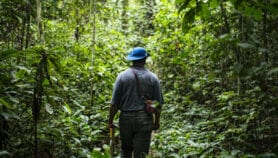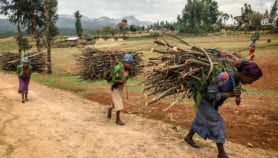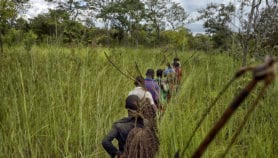By: Suad Sulaiman
Send to a friend
The details you provide on this page will not be used to send unsolicited email, and will not be sold to a 3rd party. See privacy policy.
Collecting comprehensive national and regional data could thwart the spread of malaria in Africa as conditions warm, argues Suad Sulaiman.
Understanding how and why vector-borne diseases like malaria are on the rise in different settings is essential for developing effective control measures for sub-Saharan Africa.
There is little doubt that warming, as a result of climate change, will lead to wider transmission of malaria on the African continent. Degradation of the environment and social and economic pressures due to population growth will boost this spread.
If African countries are to get a handle on malaria, they must first improve the collection of national and regional data to monitor more accurately the changes in local conditions — both social and climatic — that are likely to increase the risk of an outbreak. These data will enable regional strategies to be tailored for the prevention and control of the disease.
Mosquitoes are flourishing
In sub-Saharan Africa, climate change has several features that could influence the prevalence of malaria.
Rising temperatures, for example, can extend the habitats of the mosquitoes that carry the malaria parasite, shifting the boundaries of latitude and altitude for malaria transmission — for example, many highland areas in Burundi, Kenya and Uganda that have historically been classed as malaria-free are now experiencing epidemics.
Floods and higher rainfall in areas such as Mozambique have also played their part by creating new, or larger, breeding sites for mosquitoes that carry the malaria parasite.
Drought, too, has increased the incidence of malaria in sub-Saharan Africa. A three-year drought, combined with water extraction for power generation, has led to falling water levels in Africa’s largest lake, Lake Victoria, which lies inside the borders of Kenya, Tanzania and Uganda. Stagnant pools have formed around the shoreline, which act as prime breeding sites for mosquitoes.
Other contributing factors
But social and economic factors, including poverty and poor health services, aggravate the extent of climate-related problems. For example, people who cannot afford to move outside flood-affected areas have an increased chance of infection. This is particularly true for children, pregnant women and older people, who form high-risk groups anyway.
The broadened prevalence of malaria due to drought is also exacerbated by human activities. The Lake Victoria basin is home to around 26 million people — mostly living below the poverty line — with numbers growing by about three per cent each year. Extended lakeshore areas have been deforested for fuel and agriculture, destroying habitats of mosquito predators. Pollution has intensified and potential breeding sites for mosquitoes near human dwellings are abundant.
Similarly, Lake Chad — once one of Africa’s largest bodies of fresh water — has shrunk dramatically as human populations around it and their demands for water have grown. The lake is five per cent of the size it was 35 years ago. Again, more people are concentrated around less water and, as a result, the transmission of malaria is increasing.
Quantifying the risks
Containing the widening spread of malaria in Africa over the coming years means drawing up strategies that take into account the different climatic, social and economic factors in individual regions across countries. These factors are rarely recorded, making it difficult to assess the actual determinants of malaria in each area.
Assessments should be based on detailed surveillance to identify all the local factors that could influence the risk of malaria transmission. Likely candidates include environmental changes (such as deforestation, irrigation, swamp drainage and population growth), access to health care, resistance to antimalarial drugs and the efficiency of vector control.
Improving the collection of national and regional data on such variables is essential. Gathering this detailed information across Africa will make control measures much more effective and provide a basis for tailoring treatment options for local malaria outbreaks.
Containing the risks
Carrying out reliable assessments will require joint action. African countries such as Kenya, Tanzania and Uganda, where malaria is already a health problem — as well as those where it is likely to spread to, such as southern Egypt and Sudan — must coordinate efforts to identify and record data affecting malaria transmission accurately. Community groups and academic institutions can assist health personnel with this task by supplying details of the climatic and the social variables to be monitored and by helping to record field measurements.
Sentinel sites that represent different transmission patterns for each country also need to be established — possibly with the assistance of international agencies and external donors such as the Kenya Medical Research Institute and Ifakara Health Research and Development Centre in Tanzania, which are both already working to this end.
Data need to be regularly updated by each country — every six months at least — to identify changing patterns. These compilations would enable each country to assess its own malaria situation and formulate a plan of action. A regional board could provide further review and help coordinate national efforts.
Annual reporting to international bodies such as the World Health Organization would enable regional data analyses to be put into a broader context, with a view to developing and implementing malaria-control strategies to cope with the influence of changing climatic conditions.
Suad Sulaiman is health and environment advisor to the Environment Conservation Society in Sudan.













